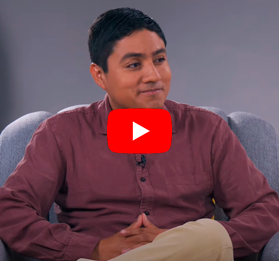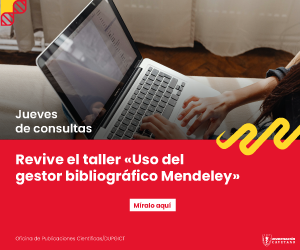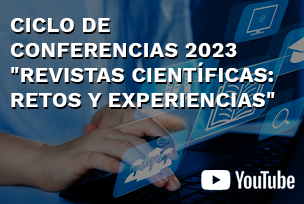Effectiveness of the occupational therapy program in the virtual environment for the improvement of the quality of life and functional capacity of patients with type 2 diabetes mellitus, Lima, Peru, 2021
DOI:
https://doi.org/10.20453/rhr.v6i2.5090Keywords:
quality of life, functional capacity, diabetesAbstract
Objective: To determine the effectiveness of the Occupational Therapy Program called “Type 2 in Positive”, in the virtual environment to improve the quality of life and functional capacity of patients with type 2 diabetes mellitus, in the year 2021. Materials and methods: The research was of quantitative approach, applied type, quasi-experimental design, with pre-test and post-test, longitudinal approach and explanatory scope. Data were collected twice in the form of a survey of type 2 diabetic patients belonging to the “Type 2 in Positive” program, applied virtually to 100 diabetic participants who represented the population, and census sampling was applied to take the totality as a sample. The evaluation instruments were validated by technical evaluators and then piloted to estimate their internal consistency. Results: It was observed that the quality-of-life scores before the beginning of the program and after the program were significantly different (Z = –9.58; p < 0.001). Moreover, differences were observed between functional capacity before and after the program (Z = –9,39; p < 0,001). Conclusions: The occupational therapy program in the virtual environment is significantly effective in improving the quality of life and functional capacity in diabetic patients.
Downloads
References
World Health Organization. Definition and diagnosis of diabetes mellitus and intermediate hyperglycaemia. Ginebra: WHO; 2006. Disponible en: http://apps.who.int/iris/bitstream/10665/43588/1/9241594934_eng.pdf
Revilla L. Epidemiología de la diabetes en el Perú [Internet]. Lima: Ministerio de Salud; 2022. Disponible en: https://www.dge.gob.pe/portalnuevo/wp-content/uploads/2022/01/Unidad-I-Tema-1-Epidemiologia-de-la-diabetes_pub.pdf
Márquez LC, De Arana AC, Yapur N, Merino N, Higareda JJ. Calidad de vida, ansiedad, depresión y consumo de alcohol en adultos con diabetes tipo 2 durante la pandemia por COVID-19. Act Invest Piscol [Internet]. 2022; 12(3): 58-71. Disponible en: https://doi.org/10.22201/fpsi.20074719e.2022.3.466
Krynski L, Goldfarb G, Maglio I. La comunicación con los pacientes mediada por tecnología: WhatsApp, e-mail, portales. El desafío del pediatra en la era digital. Arch Argent Pediatr [Internet]. 2018; 116(4): e554-e559. Disponible en: http://dx.doi.org/10.5546/aap.2018.e554
Alcázar B, Ambrosio L. Tele-enfermería en pacientes crónicos: revisión sistemática. An Sist Sanit Navar [Internet]. 2019; 42(2): 187-197. Disponible en: https://dx.doi.org/10.23938/assn.0645
Cisternas AA, Ramírez CM, Lizama ER, Miranda FT, Vidal GE, García J, et al. Guía de Terapia Ocupacional en Modalidad Remota [Internet]. Colegio de Terapeutas Ocupacionales de Chile A. G.; 2020. Disponible en: https://www.studocu.com/es/document/universidadautonoma-de-chile/terapia-ocupacional/guia-deterapia-ocupacional-en-modalidad-remota-colegio-deterapeutas-ocupacionales-de-chile-a/26432172
Mera-Mamián AY, Tabares-Gonzalez E, Montoya-Gonzalez S, Muñoz-Rodriguez DI, Monsalve Vélez F. Recomendaciones prácticas para evitar el desacondicionamiento físico durante el confinamiento por pandemia asociada a COVID-19. Univ Sal [Internet]. 2020; 22(2): 166-177. Disponible de: https://doi.org/10.22267/rus.202202.188
Wu X, Guo X, Zhang Z. The efficacy of mobile phone apps for lifestyle modification in diabetes: systematic review and meta-analysis. JMIR Pub [Internet]. 2019; 7(1): e12297. Disponible en: https://doi.org/10.2196/12297
Chamba CP. Estrategias preventivas para el mejoramiento del estilo de vida de los pacientes diabéticos del Centro de Salud San Vicente Urbano de Arenillas [tesis de maestría en Internet]. Machala: Universidad de Machala; 2017. Disponible en: http://repositorio.utmachala.edu.ec/handle/48000/10360
Lopera A, Tamayo VM, Carvajal D, Yepes K, Arcos KY. Implementación de un programa de telerrehabilitación en tiempos de aislamiento social. Mov Cient [Internet]. 2022; 16(1): 11-23. Disponible en: https://doi.org/10.33881/2011-7191.mct.16102
Diestra IL, Fierro MJ. Efectividad del programa educativo para mejorar la calidad de vida en adultos mayores diabéticos [trabajo académico de especialidad en Internet]. Lima: Universidad Norbert Wiener; 2018. Disponible en: https://hdl.handle.net/20.500.13053/2476
Mendoza CB, Meneses GY. Ejercicio físico como intervención efectiva para la disminución de la hemoglobina glicosilada en pacientes adultos con diabetes mellitus tipo II [trabajo académico de titulación en Internet]. Lima: Universidad Norbert Wiener; 2018. Disponible en: https://hdl.handle.net/20.500.13053/2102
Ayte VI. Estilos de vida en usuarios con diabetes mellitus tipo II, de los consultorios externos del Hospital San Juan de Lurigancho, 2018 [tesis de licenciatura en Internet]. Lima: Universidad Norbert Wiener; 2018. Disponible en: https://hdl.handle.net/20.500.13053/2579
Hernández-Sampieri R, Mendoza CP. Metodología de la investigación: las rutas cuantitativa, cualitativa y mixta [Internet]. Ciudad de México: McGraw Hill Education; 2018. Disponible en: http://www.biblioteca.cij.gob.mx/Archivos/Materiales_de_consulta/Drogas_de_Abuso/Articulos/SampieriLasRutas.pdf
López-Carmona JM, Rodríguez-Moctezuma R. Adaptación y validación del instrumento de Calidad de Vida Diabetes 39 en pacientes mexicanos con diabetes mellitus tipo 2. Salud Pública Mex [Internet]. 2006; 48(3): 200-211. Disponible en: https://www.scielosp.org/pdf/spm/2006.v48n3/200-211
Rosales W, Cofré C, Cicchitti A, Bertona C, Vizcaya A, González J, et al. Validación de la escala de Borg en personas con diabetes mellitus tipo 2. Rev Méd Chile [Internet]. 2016; 144(9): 1159-1163. Disponible en: http://dx.doi.org/10.4067/S0034-98872016000900009
Instituto Nacional de Estadística e Informática (PE). El 40,1% de los hogares del país tuvo acceso a Internet en el primer trimestre del 2020 [Internet]. Lima: INEI; 2020, 15 de marzo. Disponible en: https://m.inei.gob.pe/prensa/noticias/el-401-de-los-hogares-delpais-tuvo-acceso-a-internet-en-el-primer-trimestredel-2020-12272/
Appleby E, Gill ST, Hayes LK, Walker TL, Walsh M, Kumar S. Effectiveness of telerehabilitation in the management of adults with stroke: a systematic review. PloS ONE [Internet]. 2019; 14(11): e0225150. Disponible en: https://doi.org/10.1371/journal.pone.0225150
De Cristo D, Do Nascimento NP, Dias AS, Sacheti A. Telerehabilitation for cardiac patients: systematic review. Int J Cardiovasc Sci [Internet]. 2018; 31(4): 443-450. Disponible en: https://doi.org/10.5935/2359-4802.20180032
Downloads
Published
How to Cite
Issue
Section
License
Copyright (c) 2024 Angela Lucero Ramos Zapata

This work is licensed under a Creative Commons Attribution 4.0 International License.
All articles published in the Revista Herediana de Rehabilitación are under a Creative Commons Reconocimiento 4.0 International license.
The authors retain the copyright and grant the journal the right of first publication, with the work registered with the Creative Commons License, which allows third parties to use what is published whenever they mention the authorship of the work, and to the first publication in this magazine.
Authors can make other independent and additional contractual agreements for the non-exclusive distribution of the version published in this journal, provided they clearly indicate that the work was published in this journal.
The authors can file in the repository of their institution:
The research work or thesis of degree from which the published article derives.
The pre-print version: the version prior to peer review.
The Post-print version: final version after peer review.
The definitive version or final version created by the publisher for publication.











 Esta obra está bajo una
Esta obra está bajo una 